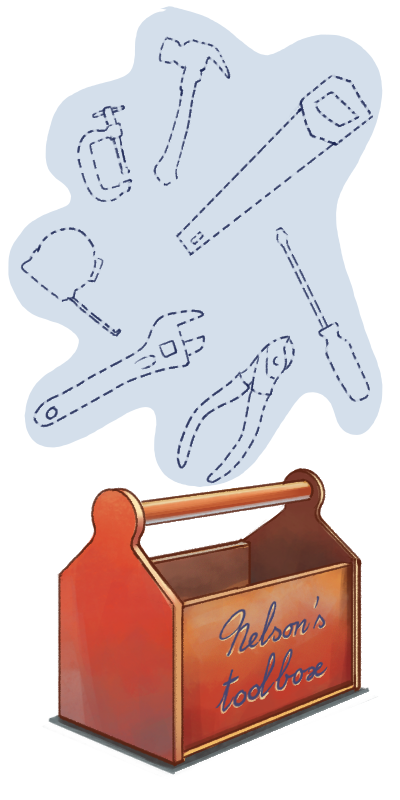





Introduction to Coping Tools Copy
The Coping Tools module covers CCT Sessions 2 and 3. Coping tools are a set of strategies used to deal with reactions to stressful situations whether they be thoughts, emotions, physiological sensations, or behaviors. Every person has a different toolkit that works best for them, which is something they develop and add to over time.

Eight therapist-taught coping skills will be introduced that have been shown to be widely effective and highly utilized by children—deep breathing, progressive muscle relaxation, guided visual imagery, the feelings thermometer, cognitive restructuring techniques (positive thoughts and thought insertion), and mindfulness (object awareness and standing meditation). The difference between adaptive coping strategies and maladaptive ones will be explained as well as how to help the child identify and develop their own coping tools.
A self-developed tool is any strategy the child is already using or would like to try out to help them cope in the long term with emotions, thoughts, physiological reactions, and behaviors. These can be generated for example from hobbies, interests, or relaxation strategies that the child has (e.g., listening to music, sports, reading, etc). Adaptive tools should never result in harm to self or others, and they should not exacerbate posttraumatic stress symptoms, including avoidance.
CCT aims to have the child experience mastery over tools. It is crucial to have the child understand the purpose of each tool and how to properly practice it both in and out of session. Therapists will work together with youth to help them select which of these skills are most useful for them. Ultimately, it is the child who decides what tools to include in their toolbox.
A child’s sense that they can effectively access and utilize coping resources in the face of traumatic stress is an essential source of empowerment. Children will carry these resources with them for the rest of their lives.
